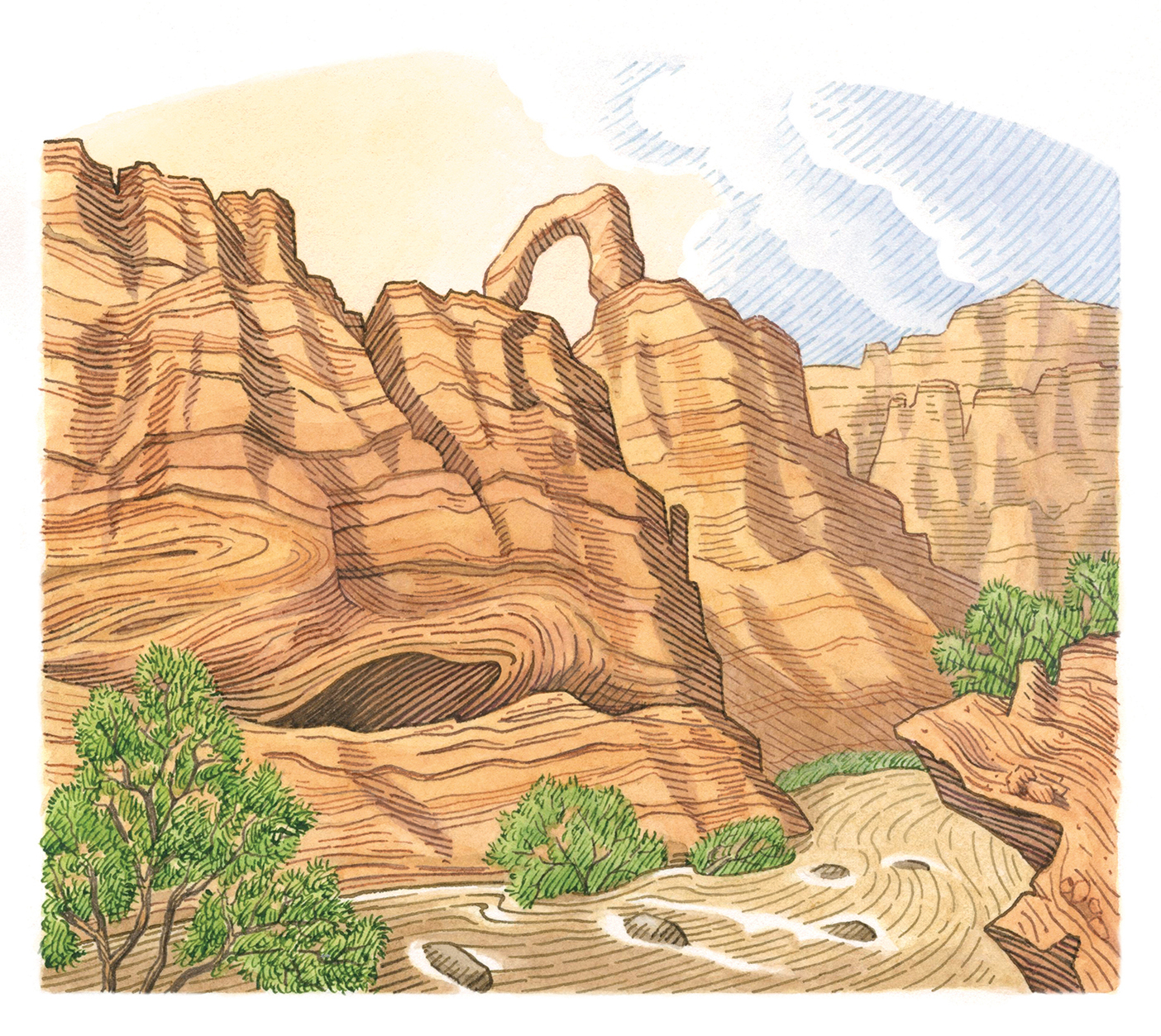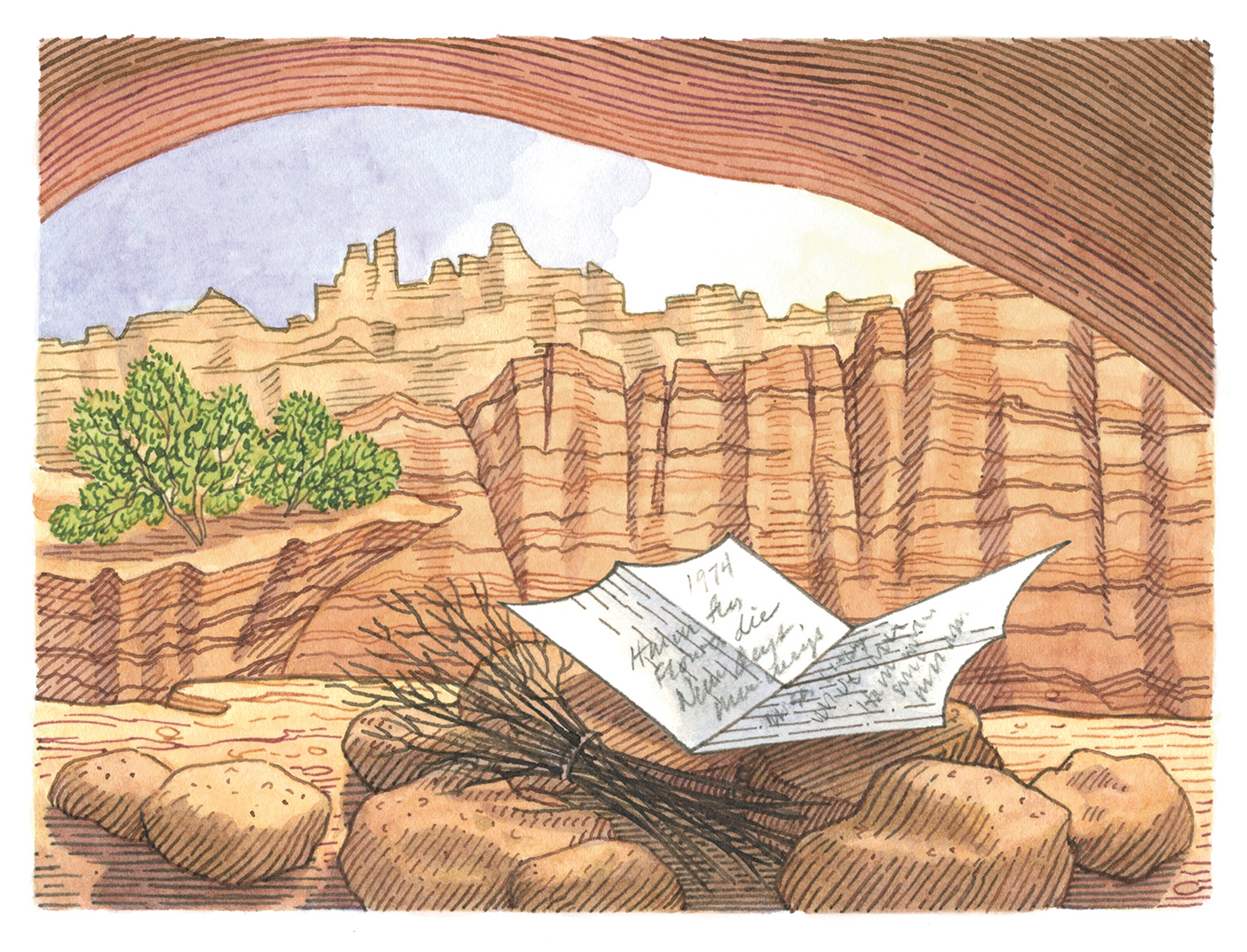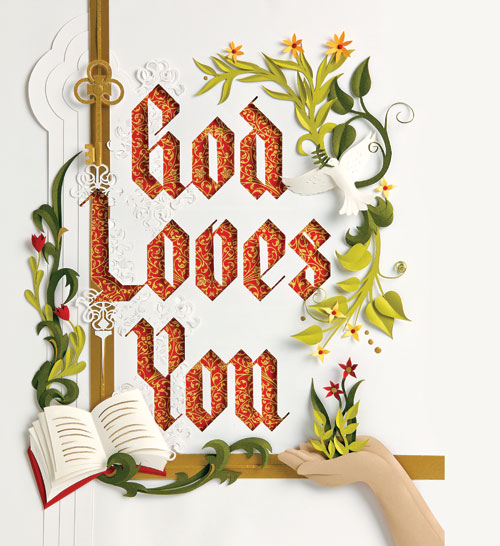On a perilous night a student experienced a rescue long in the making.

The instructor pointed to a dark spot at the base of the soaring sandstone canyon wall. In the overcast evening light, I could just make out the crevice that was to be my abode during my three-day solo, my first time ever to be alone. Getting to it would require crossing a muddy river, swollen from summer thunderstorms. I was terrified.
It was the summer of 1977, and I was an unlikely participant in BYU’s popular 30-day desert survival course. I was a 100-pound sophomore from Walnut Creek, California, with no outdoors experience, and yet I had felt inspired to sign up for the adventure in the high desert of southern Utah.
Three harrowing weeks of relentless hiking over the punishing landscape, training, and testing—combined with storms, high winds, and flash floods—had wreaked havoc on us. As we ventured into the canyon for our solos, we 36 students were exhausted, weak, and hungry.
While I stood in disbelief at the thought of crossing the river, the group marched on. I plunged into the river and focused all my attention on keeping my footing. Everything I carried was on my back, rolled into a thin wool army blanket. By the time I reached the far bank, I was fully soaked and was sobbing out desperate prayers. And then one foot sank deep into quicksand. My screams for help were snatched away by the wind as I looked over my shoulder, only to see the last hiker disappear around a corner far up the trail.
I was alone.
Fear and shock coursing through me, I grabbed at grasses and sage that broke off in my hands. Finally, I found a bit of root that had been exposed by the recent flooding. I clung to it with all my strength and, with a secure hold, relaxed enough to pull myself up and over the bank.
As I limped toward the cave-like crevice, a light rain began to blow sideways ahead of a towering mass of black clouds illuminated occasionally by lightning strikes. With another storm breaking, I was seeking refuge in a dry spot along with every other creature in the desert around me. I hoped that snakes and scorpions would be the biggest of my concerns, but in my frenzied mind, lions, tigers, and bears didn’t seem out of the question.
In the quickly fading light, I couldn’t determine how safe the crevice was for shelter. Worse, all my fire-making supplies were as soaked and covered in mud and sand as I was. It was suddenly so dark.
I had progressed from incredulity at my circumstances to panic and now to a state of shaking terror. No matter how I tried, I could not pull myself back from my state of fear. I could not convince myself that I would be all right. All I could think was, “It’s not safe to stay out of the cave—it’s not safe to go into the cave!”
And then I saw something that caught my breath.
At the mouth of the cave was a small pile of rocks, carefully arranged. Removing the stones, I found a ziplock bag sitting at the center. Inside was a honey pack for sustenance, a nest of dry dogbane to start a fire, and even a dry flint for striking a spark. I wondered who in the world would have left behind such a trove of supplies in such a remote place.
In this small package my pressing physical needs were perfectly met—I could now make a fire and have light to see my surroundings, have greater protection from animals, and be able to get dry and stay warm through the nights ahead of me. But it was a carefully folded piece of paper that nourished my soul and left an indelible mark on my heart.
On the paper were the words
Hours fly
Flowers die
New days, new ways
Pass by.
Love stays
Have a great Solo
Dated three months before, the note was signed, “Becky Horne.” Becky Horne? I read the name over and over again, hardly able to credit what I was seeing.
I knew Becky Horne!

Becky was a sweet childhood friend from my days as a girl in Virginia whom I had not seen in years. I burst into sobs of surprise and gratitude at this gift: Becky Horne, someone I knew well, whose handwriting I recognized, had been in this very spot, a place now filled with comfort and love.
Incredibly—I was not alone.
One moment I had felt like a speck of dust in the universe, with circumstances and even the elements combining against me; the next moment, the Maker of the very dust I stood in reached down from the heavens with a gift of grace.
I have no idea how long I sat there in amazement, a piece of paper in my hands and its far-reaching implications bursting into my mind.
My rescue had been planned. Before I even knew I would go on this journey, a friend, not a stranger, had left this perfect gift sitting unguarded under a pile of rocks in an ocean of desert, right in front of the cave where I, alone for the first time in my life, sought shelter.
The days and nights of solitude that stretched before me were filled with wonder. By the inspired kindness of an earthly angel, the eyes of my understanding were opened to see that my comparatively small moments of peril and fear were known to God.
I was known to God.
The irony of that dark, wet night is that, after such drama, my heart was so completely changed that I never even made the fire.
My shivering ceased, I curled up in my wet blanket, wept out my thanks to God, and—holding the ziplock bag to my chest—fell fast asleep while the storm blew itself out in the night.
Susan Jacobs Vincent is an energy kinesiologist who lives in Draper, Utah.












